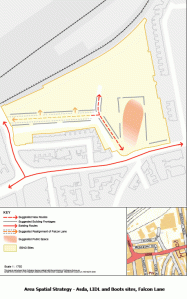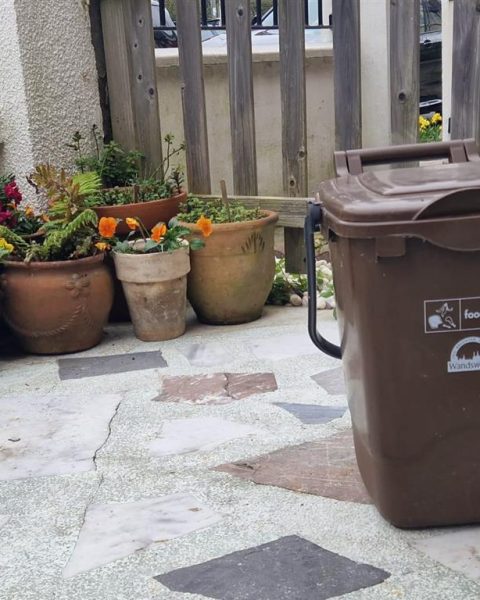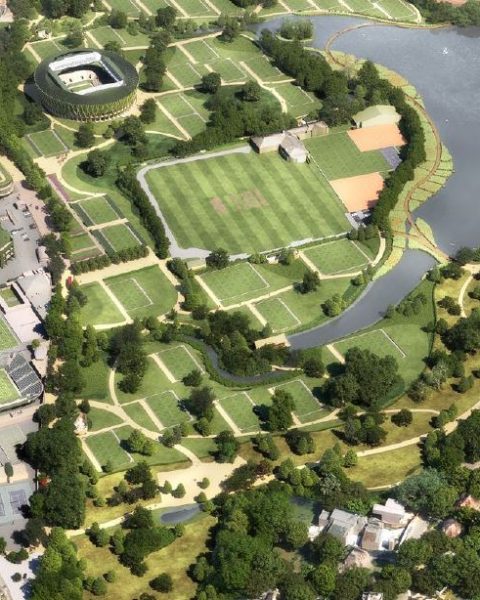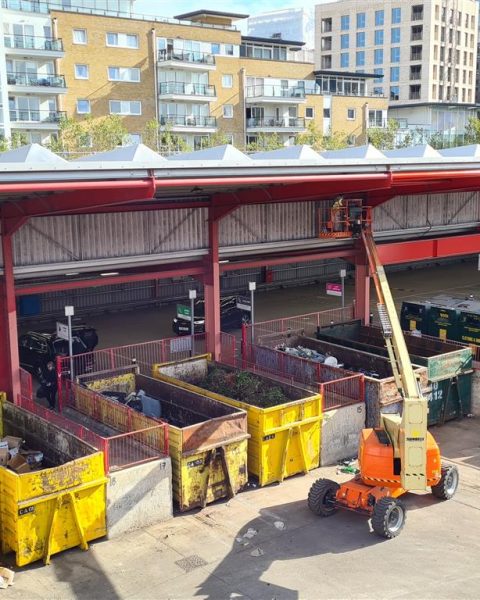Wandsworth Council confirmed the launched of Clapham Junction road works in its press release:
“This Monday (October 4) work gets underway on a major project to improve Clapham Junction’s road network and enhance the look and feel of the town centre.
The council’s scheme aims to cut traffic jams, reduce accidents by up to a third and improve the environment for pedestrians and cyclists.
Work is expected to last until spring next year and residents are being advised to expect some delays when travelling through the town. Every effort will be made to keep disruption to a minimum and no work will take place over the Christmas and New Year break.
The first phase of work involves changes to the Lavender Hill/Falcon Lane junction which will enable traffic to bypass the main crossroads at the bottom of St. John’s Hill.
The town centre will also be smartened up with high quality new paving, lampposts and other street fixtures.
Later phases of work will include further road layout changes, new cycle lanes, widening pavements, new pedestrian crossings and new trees. ”
The Strategic Planning and Transportation Overview and Scrutiny Committee approved the scheme during its meeting on the 20th September, 2010. The detailed design of the scheme was undertaken by Atkins and approved (Paper No. 09-79) by the Executive in January 2009.
It is currently expected that funds in 2010/11 will be allocated towards the following measures:
- Street lighting units
- Street lighting installation
- New junction at Falcon Lane-Lavender Hill-Eccles Road
- Repaving and re-engineering of Falcon Lane
- Utilities diversions
- Traffic signals works to be undertaken by Transport for London on
- Lavender Hill
The cost of the proposed works, estimated to be £925,000 will be met from the £1,270,000 TfL funded provision in the approved capital programme for the Clapham Junction Exemplar scheme. Further works (i.e. Mossbury road and the main crossroad) on the scheme will be dependant on funding being made available by TfL.
In appendix to the report presented before the Committee, a series of concerns was addressed by the Director of Technical Services. A few comments below:
Falcon Lane: this is currently a very quiet street. However, at some point (evening and especially weekend) there is already a big congestion as the street is used by people going to Asda. Question remains as to the consideration given to that point and what is going to be implemented to resolve this issue.
 A specific attention should be made to the piece of land between the residential houses (Mossbury road) and Falcon Road. Pages 106-109 of the SSAD document it says: “Restructuring of the area around Falcon Lane to secure an extension to the town centre through mixed use development providing additional housing and low density retail facilities on the north side of the town centre. […] The existing street alignment of Falcon Lane provides a restricted development site on the south side. Its realignment would enable active retail street frontages to be created. […] Potential realignment of Falcon Lane should be considered“. The previous version of the SSAD document (27-11-09) including a proposed map (right – click on the image to see bigger). However, stacking retail/residential along that part of the road will increase drastically the density and is against the aspiration of the Council for more public space.
A specific attention should be made to the piece of land between the residential houses (Mossbury road) and Falcon Road. Pages 106-109 of the SSAD document it says: “Restructuring of the area around Falcon Lane to secure an extension to the town centre through mixed use development providing additional housing and low density retail facilities on the north side of the town centre. […] The existing street alignment of Falcon Lane provides a restricted development site on the south side. Its realignment would enable active retail street frontages to be created. […] Potential realignment of Falcon Lane should be considered“. The previous version of the SSAD document (27-11-09) including a proposed map (right – click on the image to see bigger). However, stacking retail/residential along that part of the road will increase drastically the density and is against the aspiration of the Council for more public space.
Cycling campaign: You may refer to the article : Clapham Junction Exemplar Streetscape plan – is it good enough? that we published in February. It says:
“The Battersea noise maps shows how intrusive this is. Diverting traffic down Falcon Lane merely transfers the noise and congestion onto this narrow road past the entrance to two supermarkets. The Mayor’s Transport Strategy has the aim of reducing CO2 emissions by 60% from 1990 levels by 2025. It’s difficult to see how this target can realistically be achieved without reducing motor traffic volume and speed. […]
Lavender Hill has, and will continue to have, a single yellow line which means drivers can stop to unload/load or just nip into a shop. This blocks precisely that part of the road where the Council plans for cyclists to go. Installing a cycling ‘facility’ which is of such questionable use is surely a waste of public money.“
I think there is a good point regarding traffic and maybe some bumpers (or a ‘default’ 20mph speed limit) in Falcon lane could address the issue.
A specific, protected path for cycling should be ideal and could be realised by:
– raised table
– enlarging the pavement and reserving part of the pavement for cycling
However making sure that the speed is low might alternatively increase the security of cyclists, while also reducing the noise for residents, and with a lower cost and easy implementation rather than raised tables.
Also it would address concerns from residents/Battersea Society/Cyclist associations and would send a positive message from WBC.
In addition, I don’t really understand why there is no positive outcome of 20mph in St John’s Road. Is the signing the only issue? St John’s Road is used by Buses! Therefore s specific limit should be easy and WBC explanations are not convincing at all! The crossing on St Johns Road (specially in front of Debenhams, close to the junction, with the huge flow of passengers) with all the buses is currently dangerous. What will be done to improve safety?
Read also our article on Clapham Junction Exemplar Scheme – Phase 1


















It’s very strange but where did the idea of re-aligning Falcon Lane come from?
I agree with Cyril that the early consultation on it was lacklustre to say the least.
It doesn’t really seem to have considered some of the fundamental issues or the effects on existing properties either side of it.
In particular the land to the north (existing Lidl and Boots) will dramatically be reduced in size and value, rendering the scope of future investment there questionable at best.
Is the south side of Falcon Lane a suitable site for future residential development, or, for that matter much open space? The rear gardens of the houses in Mossbury Road are already tiny. If a public space it’s north facing and looking upwards at a railway embankment. Who is going to use it?
This needs proper discussion. It smacks of somebody in the Planning Department doodling without the slightest conception of the real effects, or costs. Is any work on Falcon Lane now sensible until this idealistic scheme is quietly dropped?
Actually, that is not a point I made in this article, but I commented to others that although I have lived in the area for 9 years now, I cannot remember any consultation…
I did not mention the loss of value for Lidle and Boots (that will need to be relocated/resized) but you make a good point. But my concerns goes also to the objective put forward by the Council to promote public spaces… while stacking retail an housing on the tiny piece of lad would do exactly the opposite.
Last but not least, I still have difficulties to understand who owns the piece of grass between the pavement and the houses of Mossbury road. I was told recently that it was owned privately. If this is the case, the local authority’s plan would multiply immensely the value of this piece of land… and the profit of the private entity… and cost millions to the taxpayer.